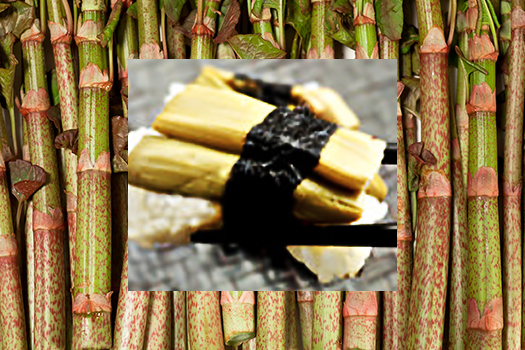
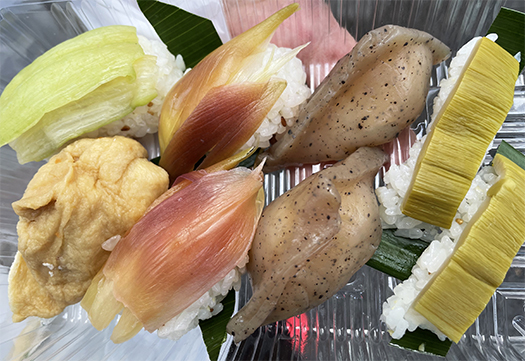
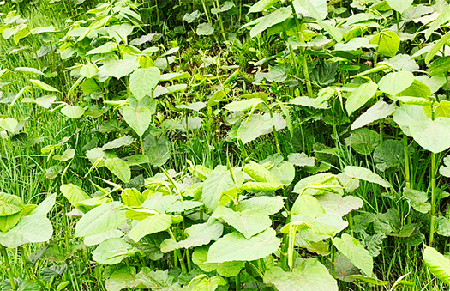
「ええーっ、イタドリ、土佐の人みんな食べるの?」「え、美味しいしょ」「へーっ、そんなら北海道から無尽蔵に送るよ、航空便ですぐに満載だわ。」「ほー、さすが北海道。でもホント食べないんだ?」
まさにところ変われば、であります。上の写真はWEB上にあった高知でのイタドリ食紹介からピンナップしてみた。基本的には北海道でのアスパラとよく似た食べ方で、油炒めなどに使うようですが、嵌め込み写真のように高知の地元食「田舎寿司」ネタとしても食されている。3枚目の写真はわたし撮影の札幌での自生の様子。
2番目の写真は売られていた魚抜きの「田舎寿司」。みょうがやコンニャクなどが定番で、野菜としてイタドリも使われるそうです。写真の緑のものはイタドリではなく「りゅうきゅう」のようでした。これはサトイモ科の野菜で茎部分をたべるのだそうです。これはこれで北海道では見たことない。
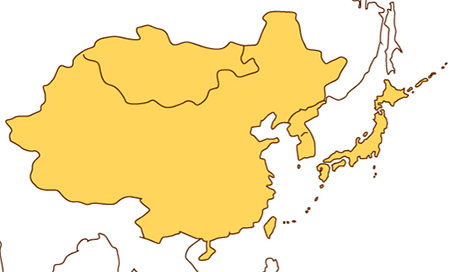
イタドリは上の分布図のように東アジア地域の在来種野草。明治初期に来日したイギリス人が持ち帰って栽培したところ、瞬く間に繁茂してしまって嫌われ野草の代表格になったと言われる。わたしのブログでも過去に「イギリスでは以前の女性首相が政敵世論から攻撃されるとき「イタドリ」と蔑称されていたというほどの嫌われぶり。まぁあのときは、支持率が下がっているのにしぶとく居座っている、その様子に対して、嫌われ者のイタドリがアナロジーされていた」と書きました。
そのイタドリですが、南国土佐では地域のソウルフードなのだと高知市内の休日市場で初めて知った(!)。と言っても実際の売られている姿はお目にかかれなかった。すぐ「売り切れ」とのこと。高知とはいえ1月だったので出荷が多くはなかったのでしょう。で、売り子の女性に情報を聞かせてもらった次第。
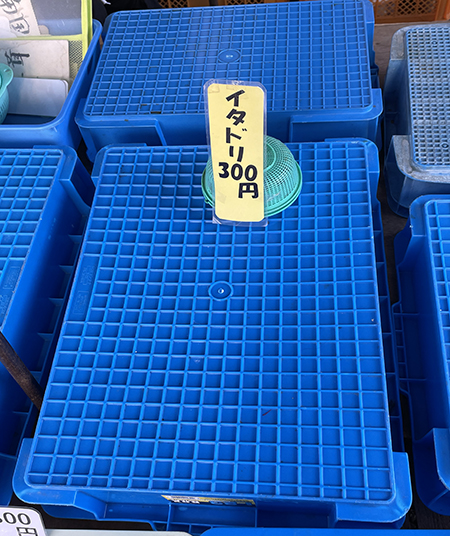

イタドリって言われて、それが野草だと気付けるのはそこそこ自然豊かな地域の住民に限られると思います。関東とか関西圏とかの人口密集地域では、ほとんどまったく目にすることがないでしょう。札幌の都会っ子育ちが素性であるわたしも高齢化して早朝散歩が習慣化してから、はじめてそれが厄介な野草で、札幌に大量に自生していることを知った。
イタドリっていう名前の由来は「痛みを取る」というもので、漢方的な民間療法の一種として利用されてきたということも知識を得た。しかしその生命力・繁殖力はハンパなく、道路管理者のみなさんは苦労されている様子を日頃から見ています。
高知県地元の食生活の一端を知ることができて、この青空市場、たいへん勉強になった次第。ますます高知大好きになっていく・・・。
English version⬇
What? That “Japanese knotweed” is soul food in Tosa, Tropical Japan
Tosa, a southern island of Japan, has been vigorously eating Japanese knotweed, which is synonymous with annoying wildflowers. We would like to send it from Hokkaido to Kochi as a representative product to deepen friendly exchanges between the regions (laughs). …
“Wow, do people in Tosa eat itadori?” “Yes, it’s delicious!” “Well, if that’s the case, we’ll send an inexhaustible supply from Hokkaido. If so, I’ll send you an inexhaustible supply of itadori from Hokkaido. “Wow, that’s Hokkaido. But you really don’t eat it?
It is true that things change from place to place. The photo above was taken from a web page that introduced itadori (Japanese bitter melon) in Kochi. Basically, it is eaten in a similar way to asparagus in Hokkaido, and is used for frying in oil, etc. However, as shown in the photo above, it is also eaten as a local dish in Kochi called “inaka-zushi” (country-style sushi).
The second photo shows “inaka-zushi” without fish. Myoga (myoga) and konnyaku (konjak) are the standard ingredients, and itadori (bitter gourd) is also used as a vegetable. The green one in the photo is not itadori but “ryukyu,” a vegetable of the taro family. This vegetable belongs to the taro family, and the stem part is eaten. I have never seen this kind of vegetable in Hokkaido.
Japanese knotweed is a native wildflower of East Asia, as shown in the illustration. It is said that when an Englishman who came to Japan in the early Meiji period (1868-1912) brought it back to Japan and cultivated it, it quickly flourished and became a representative of the hated wildflowers. In my blog, I have written in the past, “In England, when a female prime minister was attacked by her political rivals, she was derogatorily called ‘itadori’ (Japanese knotweed), which is so detestable. Well, at that time, I wrote that the hated weasel was analogized to the way she stubbornly stayed in office despite her declining approval rating.
I learned for the first time at a holiday market in Kochi City that itadori is a local soul food in Tosa, a southern island of Japan (!). I was surprised to find out that itadori is a local food in Tosa, a southern country. However, I did not see it actually being sold. I was told that they were sold out immediately. Even though it was in Kochi, it was January, so there must not have been many shipments. So, I asked the woman selling them to give me some information.
I think that only residents in areas with abundant nature would recognize it as a wildflower when told that it is a Japanese knotweed. In densely populated areas such as the Kanto and Kansai regions, you will hardly see it at all. I, who grew up as a city kid in Sapporo, learned that it was a troublesome wild plant and that it grows wild in large quantities in Sapporo only after I became a habitual early morning walker in my old age.
The name “itadori” comes from the Japanese word “itadori” meaning “to take away pain,” and I learned that it has been used as a kind of folk medicine in Chinese medicine. However, its vitality and reproductive power are not strong, and I have seen road administrators struggling with it on a daily basis.
I learned a lot from this open-air market, and I learned a lot about the dietary habits of the common people. I am becoming more and more fond of Kochi.
Posted on 3月 19th, 2023 by 三木 奎吾
Filed under: おとこの料理&食







コメントを投稿
「※誹謗中傷や、悪意のある書き込み、営利目的などのコメントを防ぐために、投稿された全てのコメントは一時的に保留されますのでご了承ください。」
You must be logged in to post a comment.